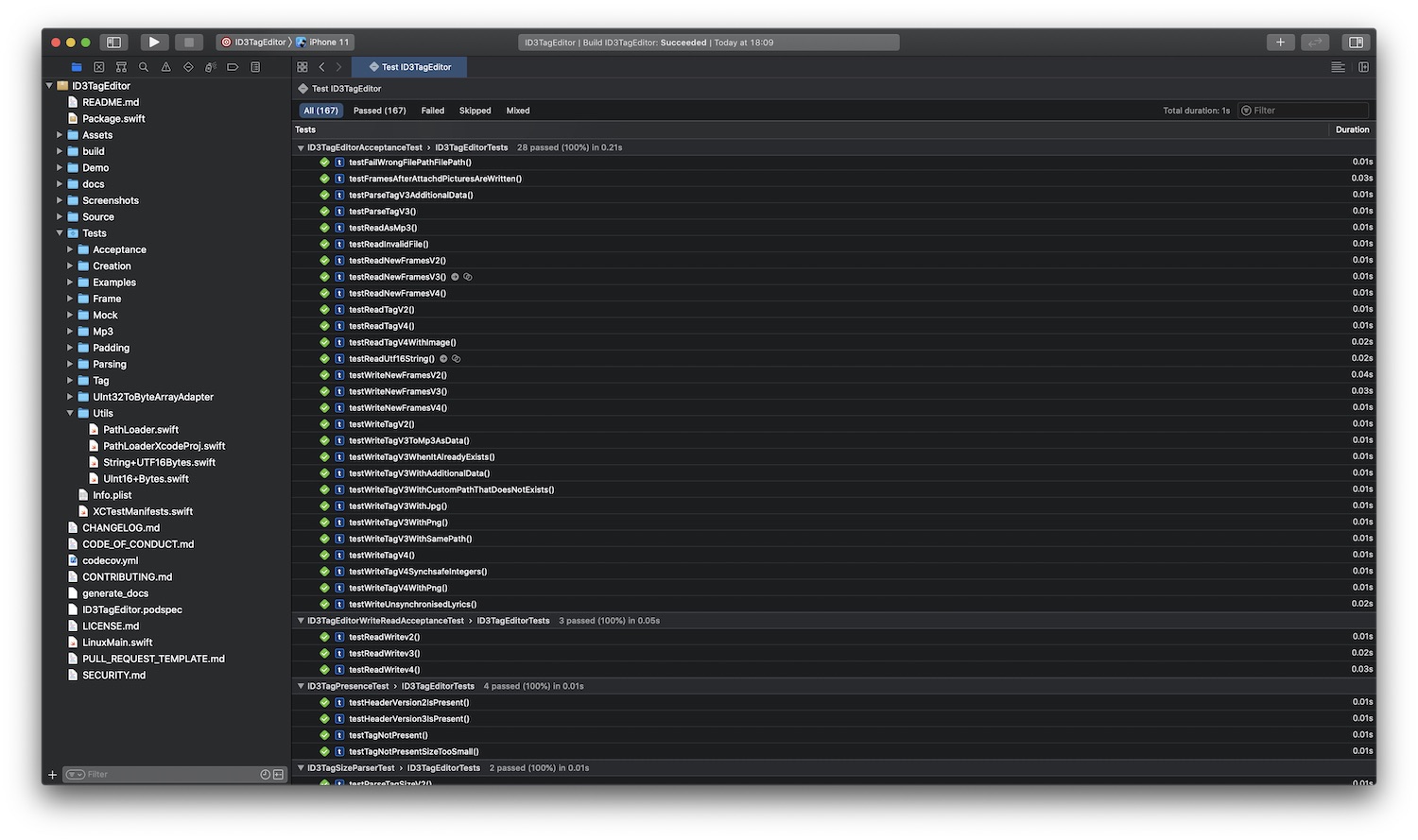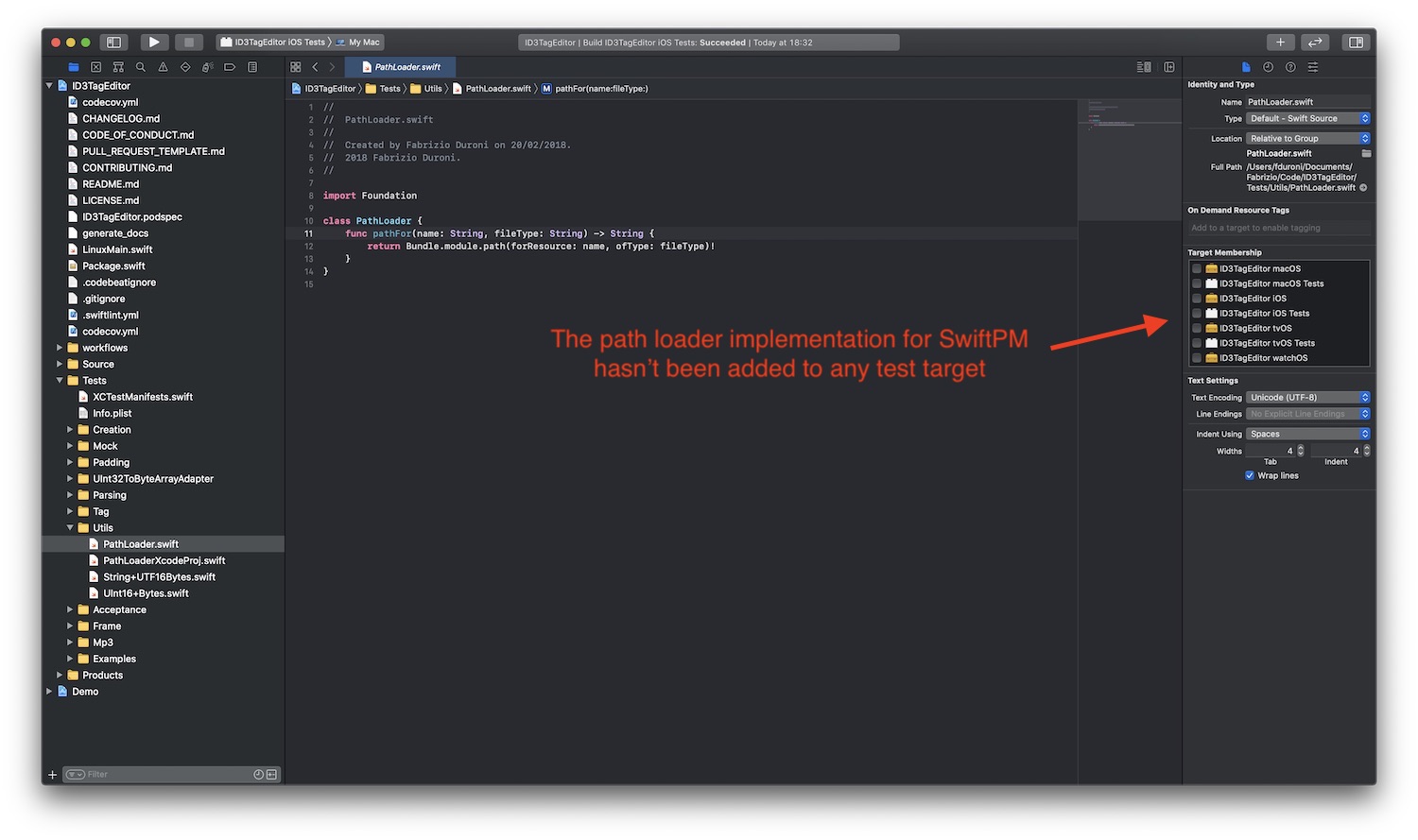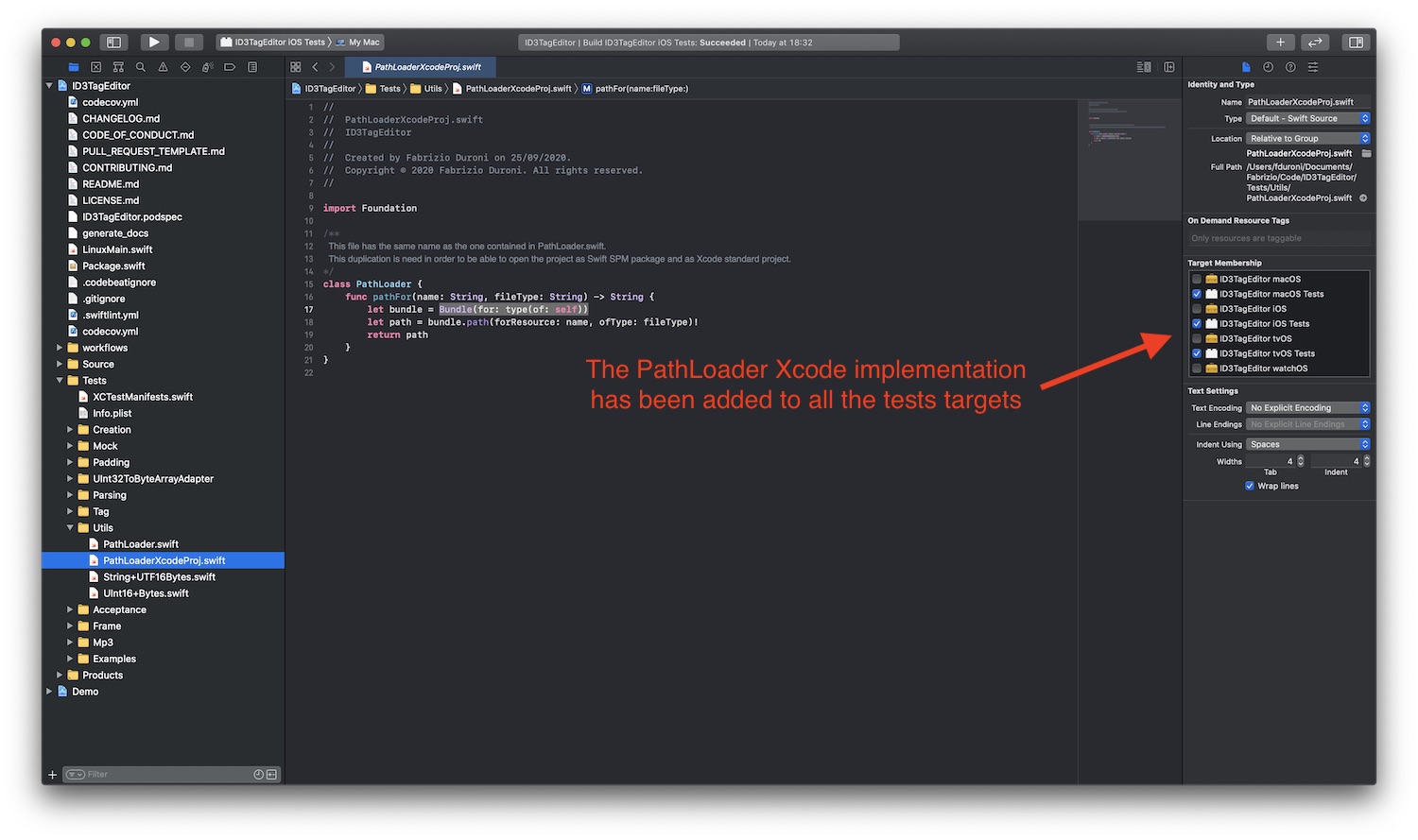
·
Recently I upgraded my ID3TagEditor swift package to the latest Swift tools version (5.3). During the upgraded I discovered that now you can bundle reources with your Swift package. In this post I will show you how you can do this, and also a interesting trick in order to be able to build a project as a Swift Package and as a standard project from Xcode.
In the last weeks I started to work again on
my ID3TagEditor library. Before starting to
add new interesting features (do you wanna see the roadmap? check
the kanban board or
the milestones) I did the usual upgrade to the latest build tools
released in the new Xcode 12. One new interesting feature included in this release ( Swift tools version 5.3) is the
ability to bundle resources with a Swift package. Before this release to bundle resources in a Swift package you had to
use weird tricks and hackings. So let's see how you can add the suppport for bundling resources by using my ID3TagEditor
library as example.
Specifically, I will show you how I can execute all my test suite, including some acceptance tests that uses mp3 and
images resources to check the correctness of the ID3 tag added by ID3TagEditor.
To support the bundling of resources, the first thing to do is to upgraded the swift tools used to build your package.
To do this, you just need to change the comment at the top of the Package.swift.
// swift-tools-version:5.3
//...other code
In my ID3TagEditor I have some acceptance tests that uses some mp3 files and some images that I use to check that
ID3TagEditor works as expected. Before the Swift tools 5.3 I was disabling these tests on the Linux platform (that
supports only the SwiftPM way to bundle libraries). Now there's a new Swift package targets(...)
and testTargets(...) function parameter called resources that you can use to load resources.
The resources parameter takes as value a list of resource process rules as input. You can choose between two type of
rules:
process rule. You can create this rule by using
the static func process(_ path: String, localization: Resource.Localization? = nil) -> Resource function (you can
find the offical
documentation here). This rule
let you process the resource according to the platform you’re building the package for. This basically means that the
build tools will optimize some files based on the type and the platform (e.g. images will be optimized if the target
platform is iOS). You can also support different rules based on different locale/languages.
copy rules. You can create this rule by using the static func copy(_ path: String) -> Resource function (you can
find the offical documentation here)
. This rule let you bundle your resources as they are without any optimization.
Both rule functions above accept a _ path: String parameter. This could be:
Given all this information I was ready to add the resources to my test target and enable the acceptance tests for the
SwiftPM build (so now they were available on Linux too ☺️). So I added the resources parameter to
the testTarget call of my ID3TagEditor. The input value is a an array with just 1 rule: a process rule that takes as
parameter the Examples folder, that is the place where I have all the resources (mp3 and images) used by the
ID3TagEditor acceptance tests. Below you can find the complete Packages.swift file.
// swift-tools-version:5.3
import PackageDescription
let package = Package(
name: "ID3TagEditor",
products: [
.library(
name: "ID3TagEditor",
targets: ["ID3TagEditor"]
)
],
dependencies: [],
targets: [
.target(
name: "ID3TagEditor",
dependencies: [],
path: "./Source",
exclude: ["Info.plist"]
),
.testTarget(
name: "ID3TagEditorTests",
dependencies: ["ID3TagEditor"],
path: "./Tests",
exclude: ["Utils/PathLoaderXcodeProj.swift", "Info.plist"],
resources: [.process("Examples")]
)
],
swiftLanguageVersions: [.v5]
)
Now the question is: how do you use/load the resources bundled with your target? When you build a Swift Package the
build tools will automatically generate a resource_bundle_accessor file. This file exposes a new Bundle.module
property that contains the bundle available for the package based on the environment you're building the source code:
Bundle.module will contain the Bundle.main.resourceURLBundle.module will contain
the Bundle(for: BundleFinder.self).resourceURLBundle.module will contain the Bundle.main.bundleURLimport class Foundation.Bundle
private class BundleFinder {}
extension Foundation.Bundle {
/// Returns the resource bundle associated with the current Swift module.
static var module: Bundle = {
let bundleName = "ID3TagEditor_ID3TagEditorTests"
let candidates = [
// Bundle should be present here when the package is linked into an App.
Bundle.main.resourceURL,
// Bundle should be present here when the package is linked into a framework.
Bundle(for: BundleFinder.self).resourceURL,
// For command-line tools.
Bundle.main.bundleURL,
]
for candidate in candidates {
let bundlePath = candidate?.appendingPathComponent(bundleName + ".bundle")
if let bundle = bundlePath.flatMap(Bundle.init(url:)) {
return bundle
}
}
fatalError("unable to find bundle named ID3TagEditor_ID3TagEditorTests")
}()
}
So in the case of ID3TagEditor, when I open and build it as a Swift Package from Xcode or build it from the
command line the Bundle.module will contain the correct bundle. As a consequence I can
call Bundle.module.path(forResource: <resource name>, ofType: <file type>) to get the path to the resources bundled
with the ID3TagEditor test target and load/use them in my tests. In fact I created a PathLoader class that I use in my
acceptance tests to load my test resources.
import Foundation
class PathLoader {
func pathFor(name: String, fileType: String) -> String {
return Bundle.module.path(forResource: name, ofType: fileType)!
}
}
Below you can find a screenshot that shows the successfull execution of the tests after opening the ID3TagEditor as a Swift Package from Xcode.

There's still one problem with this setup. ID3TagEditor is configured also as a Xcode workspace, because there are some
related demo app that are contained in the repository and I need a way to manage them while developing the library. If I
try to build the ID3TagEditor from the workspace view it will not compile. Why? Because resource_bundle_accessor
file (the one I shown you above) is not automatically generated if you build the swift package as project of a workspace
and the PathLoader class I shown you above contains the error Type 'Bundle' has no member 'module'. What can I do? I
simply created a new version of the PathLoader class that gets the bundle correctly using
the Bundle(for: type(of: self)) constructor where self is the test class that is calling the PathLoader. Then I
removed the from the tests target the file that contains the PathLoader implementation for the SwiftPM build tools and
I added to them only the new implementation, that I putted in a separated file called PathLoaderXcodeProj.swift. On
the contrary in the Packagkage.swift above you can see that I excluded from the test target the implementation used by
Xcode (see exclude: ["Utils/PathLoaderXcodeProj.swift", "Info.plist"],). In this way I'm able to run all my tests
without any error. Below you can find some screenshot with the setup I have just described to you.


You can find more details about SwiftPM and bundling resources with it in the official Apple documentation . As you can see Apple is investing a lot of resources in improving its build tools ecosystem and make the life of developers easier. Even if I still hope that Apple will finally fully embrace PWA ( so that a lot of useless shitty apps that can be web apps can disappear 😏), it's good to see that developers (of true useful native apps 😁) will enjoy in using these new tools to build their apps 😍.